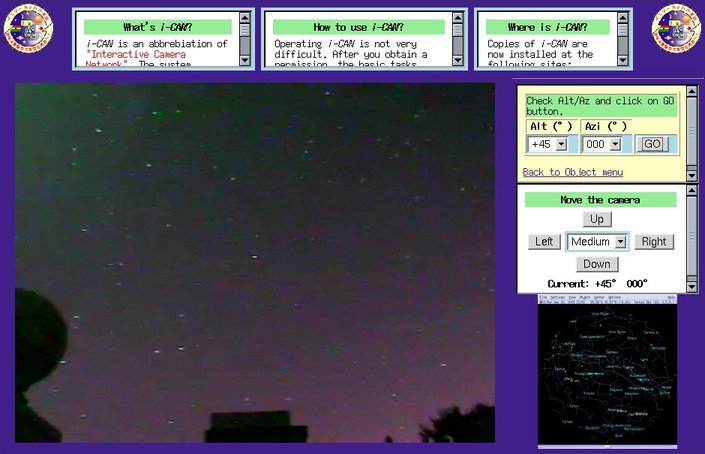
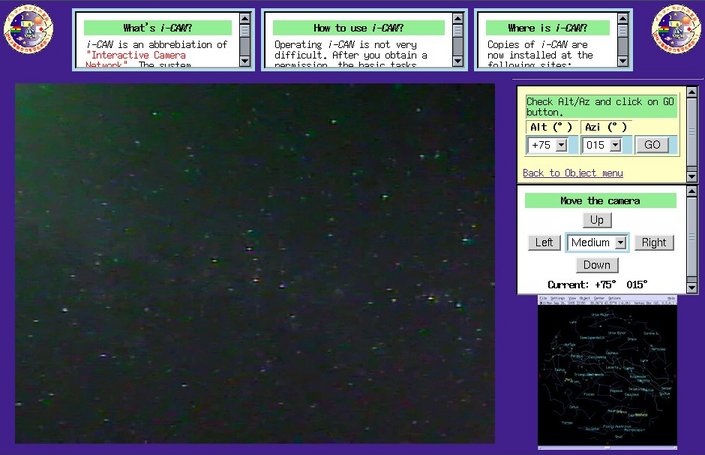
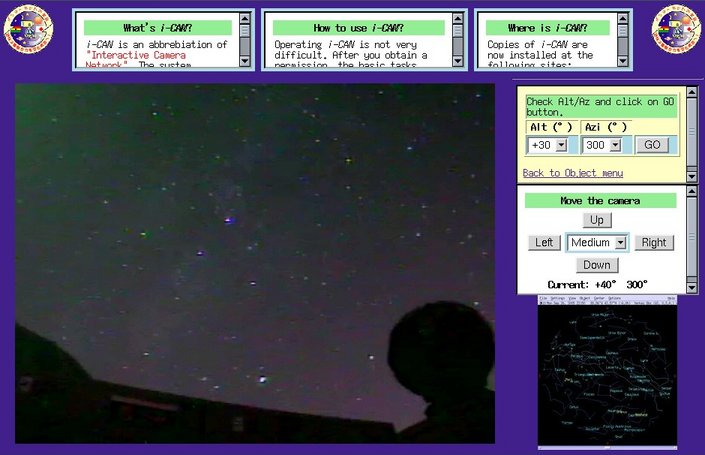
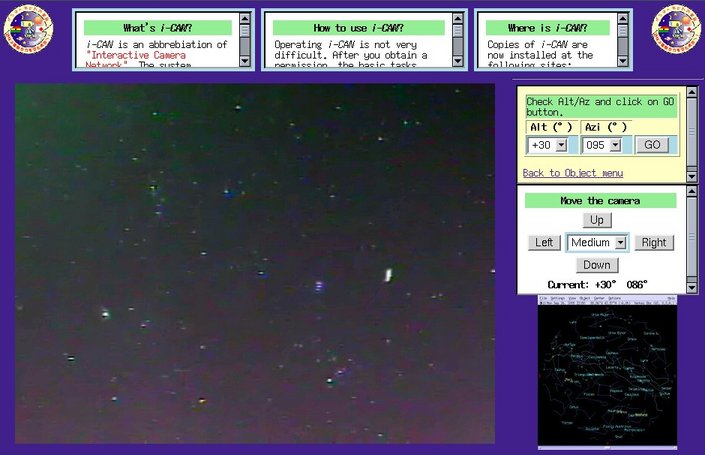
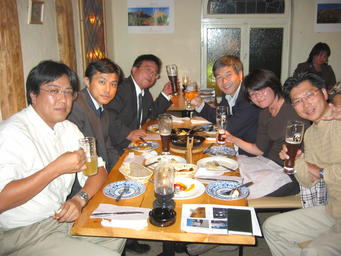
The first constellation camera "i-CAN", manufactured in the project for 2005-2006, was installed in Yerkes Observatory, Wisconsin, US, and has started operation of celestial observation.
| September 27, 2005; First light observations from Kumamoto University |
|---|

|
| This is the image of Northern sky. Litter Bear, also known as the Little Dipper, was clearly captured when the camera moves to North Star. As the latitude of Yerkes Observatory is 45 degrees, that of North Star is also 45 degrees. At the bottom of the screen, there are some objects to distract your view. Including these objects in the image may be preferable because you can confirm the direction and the movement of the stars through comparison with the ground scenery. |

|
| This is Cassiopeia obtained by moving the camera vertically upwards from North Star. You can see the hazy Milky Way running horizontally. If you move the camera downward a little, North Star appears again in the image. This is how you can learn to move the camera to find the object you want to see. Green beam on the upper left is a glowing transistor of DDC sensor for reading. This is the biggest problem with this camera. |

|
| They are Cygnus and Lyra with the Milky Way crossing the neck of Cygnus. They are about to set in the West. |

|
| For the final image, we captured a group of winter constellation rising in the East. The brightest star is Mars, but, unfortunately, its red color is not shown clearly. In addition, the image of Mars is stretched approximately to the same length as Subaru appearing to the left, due to lens aberration caused by the lens or the acrylic dome. However, in general, we can say that the quality of the camera is satisfactory enough to observe constellation. We will make our best effort for improvement of stability and operability including development of user-friendly interface. |
| October 13, 2005; Celebration of successful first light |

|
| The members celebrated the successful first light of the first "i-CAN" camera. This was actually the first face-to-face meeting with more than half of the members. Even in the IT era, it remains important to discuss face-to-face. From left to right, Okuno, Sakamoto, Ebisuzaki, Sato, Kimura, and Matsumoto (photo taken near Ochanomizu, downtown Tokyo). |